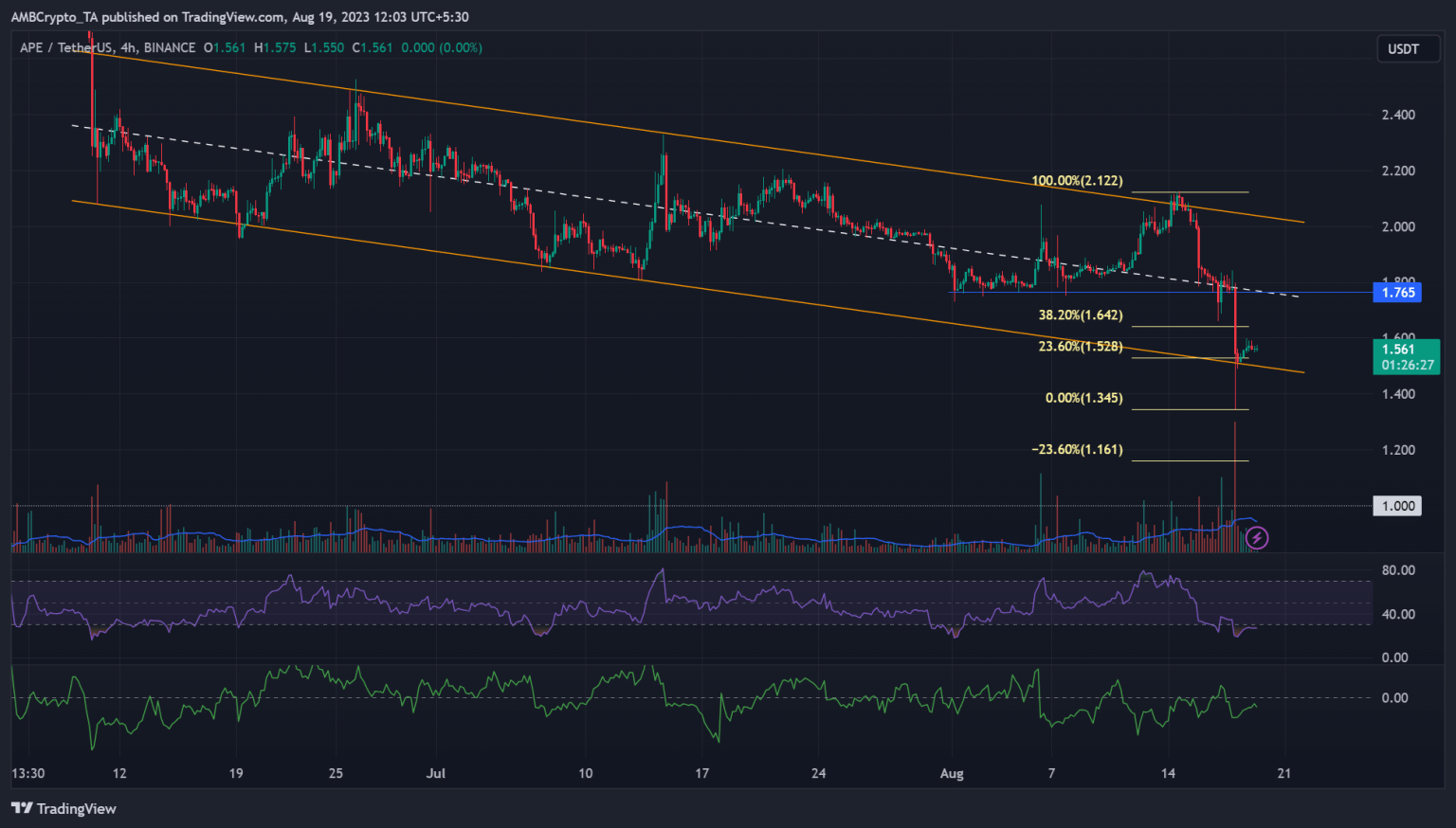Disclaimer: The information presented does not constitute financial, investment, trading, or other types of advice and is solely the writer’s opinion.
- APE’s overall price action in Q3 chalked a descending channel.
- Long positions were discouraged across all timeframes.
Apecoin’s [APE] retracement has eased at a critical range low, but a solid rebound was elusive amidst a weak Bitcoin [BTC]. Notably, APE’s momentum and trend were bearish on the lower timeframe, which could further delay the expected recovery.
Is your portfolio green? Check out the APE Profit Calculator
Since June, APE’s price action chalked a descending channel, making range extremes and mid-range key price levels to be considered by market participants.
Will bulls defend the range low?

Source: APE/USDT on TradingView
The descending channel had clear levels that APE could retest in the next few hours/ days. But the potential levels a bearish could stop at wasn’t entirely clear. So, we plotted a Fibonacci retracement tool (yellow) between recent high and low.
If BTC rebounds from the $24.8k – $26k zone, APE could also bounce from the range lows near $1.5. Northwards, the mid-range ($1.77) and the range-high (near $2) were vital resistance to clear.
But a bearish breakout could ease at crucial and immediate levels at $1.345 and $1.16, as per the Fib tool.
After attempting a reversal, the Relative Strength Index was forced back into the oversold territory. It illustrates the selling pressure that prevailed in the past few days.
Similarly, the Chaikin Money Flow (CMF) struggled to cross above the zero mark over the same period. It underscores the muted capital inflows.
Longs discouraged

Source: Coinglass
How much are 1,10,100 APEs worth today?
According to Coinglass, APE recorded more liquidations of long positions across all timeframes at the time of writing. The above data shows bearish bias prevailed on the derivatives side.
Besides, the derivatives trading volume dipped to $232.5 million—equivalent to a 60% drop. The Open Interest (OI) rates also went southwards and declined by 4% to $66 million. Collectively, these negative readings reinforce the theory of late rebound or further downward pressure.

